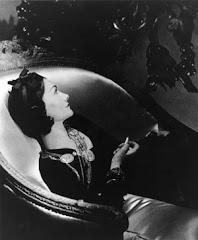Back in the 1970s a few people brought back from their trip to the Middle East a keffiyeh, the black and white scarf worn wrapped around his head (reputedly in the shape of Mandate Palestine itself) by Yasser Arafat, leader of the Palestine Liberation Organisation. Arafat wore his as headgear; on the streets of London it was wound somewhat sloppily about the neck and had the same sartorial signification as Doc Martens in that period. Don't mess with me. I am anti-fashion! Fashion is for superficial materialists! I have bigger things on my mind!
In this period, I have to concede, I was wearing a man's jacket, its lapels covered in badges announcing my allegiance to the Ant-Nazi League, CND and various other causes, over a 1930s tea-dress which smelled of mothballs and old stains, bought at a stall on Portobello Road market, Mary Quant green or pink tights, and Converse All Stars. This get-up was to indicate that you wouldn't catch me in Chelsea Girl, oh no. I didn't have a keffiyeh because I wouldn't have known where to get one, and to be honest, I knew next to nothing about international relations. And if I were to wear a keffiyeh, and were my mother to have found out what it meant, she would have poured a pot of boiling chicken soup over my head. Much later I discovered that you could buy a keffiyeh at that time in blue and white, decorated with stars of David, to symbolise . . . something else.
The keffiyeh continued to be worn as an emblem of political defiance and international solidarity with the Palestinian cause until about a decade ago, when they started turning up tied around the necks of motorcycle messengers in London. I was surprised that so many of these knights of the road had such an elevated political consciousness, until I read that they were sold in biker shops as 'desert scarves,' advertised for their warmth, when hurtling through London traffic on a cold wet day.
And then they started to be worn by teenagers. A few weeks ago, at the local farmer's market, I bumped into a woman I know from the gym. We sometimes go to the Designer Warehouse Sale at Kings Cross together. She's South African, Jewish and spent some time in Israel. Her daughter was wearing a keffiyeh. Do you know what that means? I asked her. No, she replied. She bought it in Top Shop, where, I now read, they knock them out as a Tablecloth Scarf.
Over at Faking Good Breeding Meg writes:
. . . last year TopShop and Urban Outfitters began stocking and promoting the scarves, causing a backlash that forced the stores to pull the items. Ironically, considering the item's contentious message, Urban Outfitters titled the product "Anti-War Woven Scarf". . . Interestingly, each color and pattern represents different political sympathies. The black and white pattern is generally worn by members of Arafat's Fateh [sic] party, the checkered red is the signature of the radical Leftist PLO factions and the green is often worn by Hamas,* the Islamic terrorist organization.*In the Guardian today, Jess Cartner-Morley announces a new development, the Balenciaga £3000 keffiyeh. Such is the long journey between an act of political solidarity with the Palestinian people and the high street that Jess provides us with universally useful advice on this season's way of tying that Balenciaga scarf, or indeed any scarf:
Having got the right scarf, please try not to ruin it by wearing it the wrong way. The doubled-over-and-looped-through technique is no longer an option unless you are a French exchange student. The tucked-under-the-lapels technique suggests that you're concerned about draughts. The authentic catwalk look is triangle-fronted, like a baby in a bib. It looks slightly less ridiculous if you leave a gap at your neck, to avoid the Desperate Dan effect. But, to be honest, if it cost three grand, you probably want to wind it as tight as possible. Oh, and try not to leave it on the bus.It is the opinion of The Thoughtful Dresser that whenever fashion designers try to enter the political sphere by Making A Statement (cf Katherine Hamnett and her t-shirts) they invariably wind up devaluing whatever it is that they wanted to say in the first place by the muddled thinking and airy conceptualism of those who spend all day designing mini-crinis. Would you want Jamie Oliver designing your little black dress? Or Karl Lagerfeld in charge of upcoming negotiations at Annapolis? No?
* This is not a political blog so any discussion of the aims and methodology of Hamas will have to take place elsewhere, and not in my comments box.
